What is LSD?
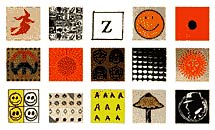 Lysergic Acid Diathylamide (LSD) is a psychoactive hallucinogenic drug. It comes in a variety of forms, but is most commonly sold in the form of blotter paper, which is small paper squares that has been dipped in LSD. This photo shows the actually size of the squares.
Lysergic Acid Diathylamide (LSD) is a psychoactive hallucinogenic drug. It comes in a variety of forms, but is most commonly sold in the form of blotter paper, which is small paper squares that has been dipped in LSD. This photo shows the actually size of the squares.
The drug also can be found in several others forms — including a powder or crystal, liquid, gelatin squares, laced on a sugar cube and capsules, or as a small pill (not common but out there). LSD can also be rubbed against the skin. LSD has been available (at first legally), then on the illicit market for over 40 years.
More LSD Facts
LSD is sold under more than 80 street names including: acid, blotter, cid, doses, and trips, as well as names that reflect the designs on sheets of blotter paper.
More than 200 types of LSD tablets have been encountered since 1969 and more than 350 paper designs have been acquired since 1975. Designs range from simple stars in black and white to exotic artwork in full four-color print. Inexpensiveness (prices range from $2 to $5 per dosage unit or “hit”, wholesale lots often sell for as little as $1 or less), ready availability, alleged “mind-expanding” properties, and intriguing paper designs make LSD especially attractive to teenagers and college students. Some users are now as young as junior high age.
Dosages of LSD are measured in micrograms, or millionths of a gram. By comparison, dosages of cocaine and heroin are measured in milligrams, or thousandths of a gram. Compared to other hallucinogenic substances, LSD is 100 times more potent than psilocybin (“magic mushrooms”) and 4,000 times more potent than mescaline. The dosage level that will produce an hallucinogenic effect in humans generally is considered to be 25 micrograms. Over the past several years, the potency of LSD obtained during drug law enforcement operations has ranged between 20 and 80 micrograms per dosage unit. The Drug Enforcement Administration ( DEA) recognizes 50 micrograms as the standard dosage unit equivalency.
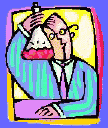 LSD is a product of professional chemists. The primary chemical involved, Lysergic Acid, is illegal, so it requires a professional to derive the compound and to turn it into LSD
LSD is a product of professional chemists. The primary chemical involved, Lysergic Acid, is illegal, so it requires a professional to derive the compound and to turn it into LSD
D-lysergic acid diethylamide (LSD’s other name) is the most potent hallucinogenic substance, according to the U.S. Drug Enforcement Administration. It became available on the streets in the 1960s, but was soon outlawed. With LSD tablets, it is difficult to tell how much LSD is actually in the blotter. Tabs are often dipped in another chemical agent in order to bind the LSD to the paper. The binding chemical agents can often cause side effects, such as grinding of the jaw and restlessness. Liquid acid is ingested per drop. It is generally much stronger (containing 200 to 400 micrograms per drop). Many users prefer liquid acid to tabs because no chemical binding agents are needed. Therefore, the “trip” seems smoother.
A Short History of LSD
 LSD was first synthesized in 1938 by a chemist working for Sandoz Laboratories in Switzerland. His name was Dr. Albert Hofmann. There is a ‘foundation’ named after him and many websites are dedicated to him for inventing this drug, just an FYI.
LSD was first synthesized in 1938 by a chemist working for Sandoz Laboratories in Switzerland. His name was Dr. Albert Hofmann. There is a ‘foundation’ named after him and many websites are dedicated to him for inventing this drug, just an FYI.
LSD was initially developed as a circulatory and respiratory stimulant. However, no real benefits of the compound were identified and its study was discontinued. In the 1940’s, interest in the drug was revived when it was thought to be a possible treatment for schizophrenia. Because of LSD’s structural relationship to a chemical that is present in the brain and its similarity in effect to certain aspects of psychosis, LSD was used as a research tool in studies of mental illness.
Sandoz Laboratories, the drug’s sole producer, began marketing LSD in 1947 under the trade name “Delysid” and it was introduced into the United States a year later. Sandoz marketed LSD as a psychiatric cure-all and hailed it as a cure for everything from schizophrenia to criminal behavior, sexual perversions and alcoholism. AND Sandoz, in its LSD related literature suggested that psychiatrists take the drug themselves in order to “gain an understanding of the subjective experiences of the schizophrenic.” During a 15 year period beginning in 1950, research on LSD and other hallucinogens generated over 1,000 scientific papers, several dozen books, and 6 international conferences, and LSD was prescribed as treatment to over 40,000 patients. Although initial observations on the benefits of LSD were highly optimistic, empirical data developed subsequently proved much less promising.
 The late Timothy Leary gave LSD its fame after being kicked out from Harvard University for using students and other volunteers to study the effects of LSD on the brain. He later became an advocate of the drug, promoting its “mind expanding qualities.” LSD as a cultural phenomenon in the 1960s and 1970s has been a subject for much literature, such as Tom Wolfe’s “The Electric Kool-Aid Acid Test”.
The late Timothy Leary gave LSD its fame after being kicked out from Harvard University for using students and other volunteers to study the effects of LSD on the brain. He later became an advocate of the drug, promoting its “mind expanding qualities.” LSD as a cultural phenomenon in the 1960s and 1970s has been a subject for much literature, such as Tom Wolfe’s “The Electric Kool-Aid Acid Test”.
During the late 1960’s and early 1970’s, the drug culture adopted LSD as the “psychedelic” drug of choice. The infatuation with LSD lasted for a number of years until considerable negative publicity emerged on “bad trips” — psychotic psychological traumas associated with the LSD high — and “flashbacks”, uncontrollable recurring experiences. As a result of these revelations and effective drug law enforcement efforts, LSD dramatically decreased in popularity in the mid-1970’s. Scientific study of LSD ceased around 1980 as research funding declined.
LSD has remained popular with high school and college students and other young adults. It is inexpensive and easy for teens and young adults to obtain and it has recently made a bit of a comeback to the drug scene.
Here is another photos of a blotter of “stickers”. Again these are true to life size. If you look closely you can see the perforations in the blotter paper, so this is 15 “hits” of LSD.
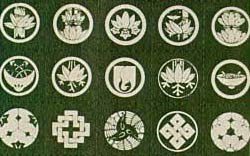
LSD’s use in scientific research has been extensive and its use has been widespread. Although the study of LSD and other hallucinogens increased the awareness of how chemicals could affect the mind, its use in psychotherapy largely has been debunked. It produces no aphrodisiac effects, does not increase creativity, has no lasting positive effect in treating alcoholics or criminals, does not produce a model “psychosis” and does not generate immediate personality change. However, drug studies have confirmed that the powerful hallucinogenic effects of this drug can produce profound adverse reactions, such as acute panic reactions, psychotic crises, and flashbacks. (More photos on the Drug Photos page)
What is “Tripping” Like?
 LSD has gotten the reputation for being a mind-expanding drug. Many users claim that after using LSD, their life has changed. Users in the first hour of “tripping” feel anxious, a little tingly and colors may seem brighter. After the first three hours, the peak begins.
LSD has gotten the reputation for being a mind-expanding drug. Many users claim that after using LSD, their life has changed. Users in the first hour of “tripping” feel anxious, a little tingly and colors may seem brighter. After the first three hours, the peak begins.
Users have extreme visual hallucinations. Some report that everything seems like it is in motion, and colors are vivid. Users sometimes see things that are not there. Mental changes are the most intense. Users often experience extreme mental stages, going from periods of giddiness, to extreme insight. Users often may have conversations that do not make a whole lot of sense to an outside observer. They also show extreme paranoia, especially when put in a situation with people who are not tripping.
Once a user develops an idea in his or her head, it is hard for them to let it go, particularly if it deals with fear or a problem he or she has been agonizing over. The mind becomes extremely sensitive to its surroundings, and any change or disruption can extremely upset a user. When this happens, it is called a “bad trip”. Never leave someone alone who is having a ” bad trip“, stay with them, keep them calm, talk to them. (This has worked from my own personal experience years ago and although it was a long night, the trip did end in the morning).
A “Bad Trip”
It is extremely difficult to talk someone out of a bad trip!
 The thoughts and fears of someone on a bad trip may make no sense to others, but make perfect sense to them. A bad trip can cause a user to react so violently that he hurts himself or other people. People have been known to run away, jump out of windows and do other crazy things when they are having a bad trip. This is one of the main reasons why LSD is illegal. (Of course, politics play a huge role in deciding what is legal and what is not, it is not always due to a drug’s hazards). There is much debate from LSD users as to why it became illegal.
The thoughts and fears of someone on a bad trip may make no sense to others, but make perfect sense to them. A bad trip can cause a user to react so violently that he hurts himself or other people. People have been known to run away, jump out of windows and do other crazy things when they are having a bad trip. This is one of the main reasons why LSD is illegal. (Of course, politics play a huge role in deciding what is legal and what is not, it is not always due to a drug’s hazards). There is much debate from LSD users as to why it became illegal.
Unlike the other drugs mentioned in this section, it is not what LSD does to a user physically that is more of a concern, it’s how it affects them mentally. There is a reason using LSD is called “tripping”. Do not expect to do anything other than just that when using it. A user will be surprised at how difficult and confusing using a phone or dealing with authority is. Do not drive or operate any sort of machinery. It is a good idea to have at least one sober “babysitter” or designated sober person there to take care of a user just in case. People with histories of psychoses such as schizophrenia in the family should avoid using LSD, as it can bring out latent tendencies towards schizophrenia. (We are not suggesting that you use LSD, but informing you on how it could be used more safely). Continuous use of LSD can trigger mental and social problems as a result of difficulty facing reality.
Flashbacks can occur for years after someone has quit using LSD.
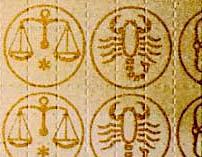
My Experiences with LSD
by Matthew W. – College Student in Chicago, USA, Age 20
 A Bad Trip… can be scary as hell, but truthfully, I really haven’t had many bad ones. I just like this image on the left and since I usually trip with my roommate, I thought it was appropriate, it kind of reminds me of us. First, some background on me…
A Bad Trip… can be scary as hell, but truthfully, I really haven’t had many bad ones. I just like this image on the left and since I usually trip with my roommate, I thought it was appropriate, it kind of reminds me of us. First, some background on me…
My name is Matt and I am an B+ student at the University of Chicago, which means I work really hard on my studies, but I also need a way to alter my state of mind and so that is why I have used LSD.
To me it is a cheap thrill, costs less than most drugs and even less than enough beer to get a buzz. Am I going to continue to use it, I don’t know, probably not for lots of reasons. I don’t think it is the healthiest thing to be doing to my body, but I want to write the truth. I guess part of me wants others to know that you don’t have to experiment with this drug, there are less harmful ones out there or don’t use drugs at all if that is your thing. A lot of my friends don’t use drugs and we are still friends.
A Not-So-Bad-Trip… I don’t recommend it, but what LSD can also feel like.








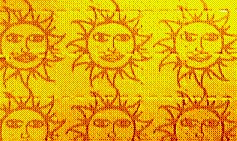


LSD laced blotter paper, if you look closely you can see the perforations.
A tidbit of information that I found for you: In a 2001 survey, 10.9 percent of U.S. high school seniors admitted taking it, and an estimated 16.4 million Americans have experimented with it, at one time or another.
![]()
I apologize for not writing this sooner, I am really busy with school as this is a busy semester and I had other priorities. Anything I write here about my experiences with LSD are for educational purposes, I’m not trying to influence anyone to take it, if anything hear what it’s like and maybe you will never use it. Teen Health Secrets is not responsible for anything I write, blah, blah, blah… Amy was nice enough to let me write about this because I think it’s important. Each person will have different tripping experiences, although I do find a lot of similarities in them when I talk to people.
Enough of that….
Flashbacks & Bad Trips: Stories you may hear that may not be true.
Stories about LSD are legendary, still, the drug rarely causes serious physical problems, none that my friends and I found to be true. You will read that users may suffer a “crash period”, which can haunt you in the background of everyday consciousness for a few days after the LSD wears off, I have had this experience, but not every time I have tripped.
Users also typically become much less sensitive to LSD’s effects for several days after use — a condition known as tolerance. Studies have shown that LSD doesn’t cause cancer, brain damage, or chromosome breakage. (I had this debate with my Chemistry professor after class for an hour one day, he says it does, whatever.) Despite its potency, it is nearly impossible to overdose on it. That doesn’t mean that its good for you, just a fact that I turned up researching the drug for personal reasons.
LSD can (and does) cause severe psychological discomfort – even trauma. In fact, one bad trip can quickly make you forget dozens of “hearts and flowers” trips. When bad trips do occur, they tend to take two main forms: panic attacks and psychotic reactions.
Panic Attacks:
The most common adverse reaction to LSD, panic usually centers on a fear of dying or going crazy.
Psychotic Reactions: Serious breaks with reality, psychotic episodes usually include hallucinations and delusions. LSD fueled psychotic episodes are like bad trips that don’t end when the drug wears off. These reactions may be linked to the “triggering” of preexisting problems and may require professional intervention – similar to PTSD, post-traumatic stress disorder.
Flashbacks: Another occasional effect of LSD are flashbacks. This is said to be the reemergence of effects — usually panic — days or weeks later. Since LSD is not retained in the body, (this is highly debated, btw, some say it does remain in fat cells), flashbacks are probably psychological rather than physiological in origin. Flashback triggers can include stress, severe fatigue, other drug use, or ‘hints’ associated with a past trip. Although acid flashbacks, like other anxiety reactions, seldom last longer than 90 minutes, they can seem endless and like a living hell, since they tend to focus on nasty aspects of bad trips. (I had one where everything I saw looked like a beating heart, it was quite frightening, it doesn’t sound like it when I write this for some reason, but I can still visualize it.
